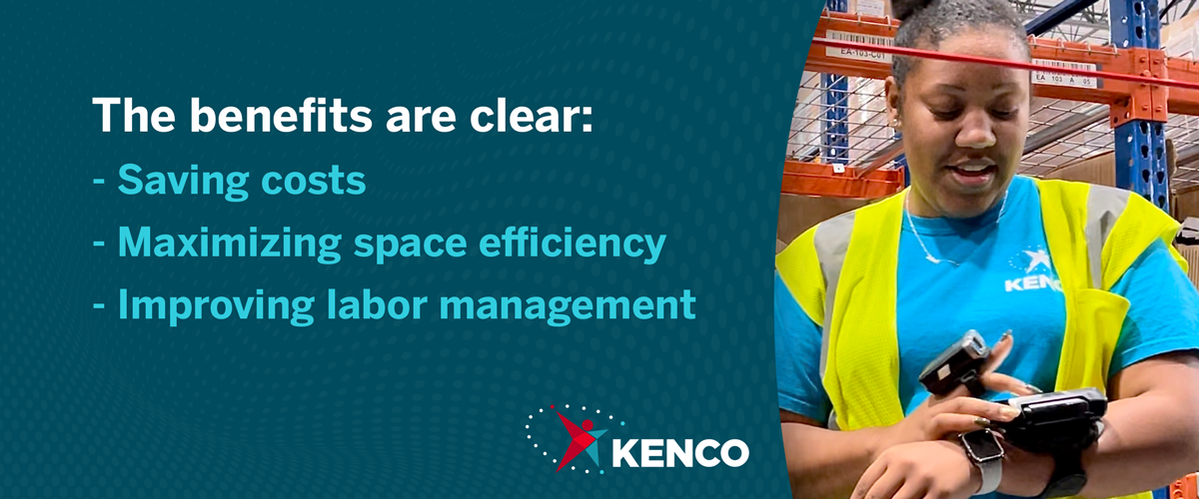
Technology has redefined CPG logistic operations over the past decade, and this trend shows no signs of slowing down.
While the impact of these advancements is everywhere, three key areas of business in particular have felt it the most:
- Data improvement, from inputting routine metrics to forecasting demand through predictive analytics.
- Physical automation to eliminate manual tasks like creating boxes or even operating forklifts in person.
- Process improvement for easier, faster, and less error-prone processes, such as pick-to-light solutions or new ways to manage warehouse shifts.
But to realize the full impact of these technologies on CPG logistic operations, you need to take a strategic approach. Otherwise, finding the right technology and implementing the right mix of solutions for your needs can become overwhelming quickly.
With that in mind, let’s explore what you need to consider and top solutions your operation might benefit from adopting.
3 Areas to Consider When Evaluating New Technology
CPG logistic operations have an enormous and ever-growing amount of technologies available. Understanding where to start is overwhelming, and without the right focus, it’s easy to get lost in exploring all the options. Considering the following three areas can help narrow your search to the most appropriate technology:
- Order profile: What does your order profile and activity look like? Do you ship pallets, layers, cases, or eaches? And in what quantities do you typically ship those?
- Complexity vs. ROI: How difficult will it be to implement and maintain a given technology and what is the expected return on investment?
- Valuable categories: Where does each technology fall across the categories of data improvement, physical automation, and process improvement? And where are your operations needs the highest?
Top Technology to Evaluate for Your CPG Logistic Operations
Once you’ve made these considerations, it’s time to start evaluating – and implementing – technology. Of course, there are several types of solutions that extend across the categories of data improvement, physical automation, and process improvement. Start with the following:
Table Stakes Solutions
Table stakes solutions are must-haves for any CPG logistics operation. Top examples include:
- Updated Warehouse Management System (WMS): Even if you already have a WMS, do you keep it up to date? Upgrading your WMS regularly is essential to ensuring you have the latest functionality to support other technology across your operations.
- Labor Management System (LMS): An LMS that supports labor planning and other management decisions around productivity and coaching can create a better experience for warehouse associates and management and even result in monetary benefits.
- Middleware: A software that sits between your WMS and various other technologies to integrate those systems is foundational to automation because it allows for easier management and a single, consolidated view of warehouse operations.
Space-Saving Solutions
With warehouse space at a premium, solutions that maximize space are a must. Top examples include:
- Automated Storage Solutions: Robots that store products in an optimal layout to maximize the available space can increase storage capacity by as much as 4x for companies with a lot of SKUs.
- Slotting: An artificial intelligence solution that can automate product layout decisions can improve efficiency and precision and even evaluate the labor costs and potential savings of changes to determine if the return is worthwhile.
- Order Forecasting: A predictive analytics solution that can more accurately forecast what customers will buy based on thousands of data points brings more precision to managing stock levels and labor needs.
Labor-Impacting Solutions
Solutions that help retain highly engaged and experienced associates on the warehouse floor can positively affect the customer experience and other operations. Top examples include:
- Automated Visual Management: Digital signage allows for clearer and more accurate real-time communications so everyone in the warehouse can easily determine how operations are pacing to schedule.
- Electronic Bill of Lading (BOL): Allowing drivers to complete the necessary BOL via an electronic kiosk instead of having to find the right person and complete physical paperwork saves time and effort.
- Robotic Process Automation (RPA): Eliminating manual work associated with repetitive data entry, like entering recurring metrics or tracking information, frees associates’ time and reduces human error.
- Work Schedule Flexibility: A solution that makes it easier for warehouse associates to manage their shifts, for example by making it easy to put a shift up for bid or take on an extra shift, can simplify coordination, ensure all shifts are covered, and give associates a greater work-life balance.
CPG Technology is Only Just Getting Started
As incredible of an impact as technologies like these have already had on CPG logistic operations, we’re only just getting started. Adopting more solutions like these and continuing to keep an eye on new technology coming to market can yield impressive results – from saving costs to maximizing space efficiency to improving labor management and the list goes on.
Ready for a deeper look into the impact of technology on CPG and tips on where to start your technology search? Download our white paper, Inside the Must-Have Technology for Every CPG Company, for everything you need to know about top solutions to improve logistic operations and tips for evaluating new technology effectively.
